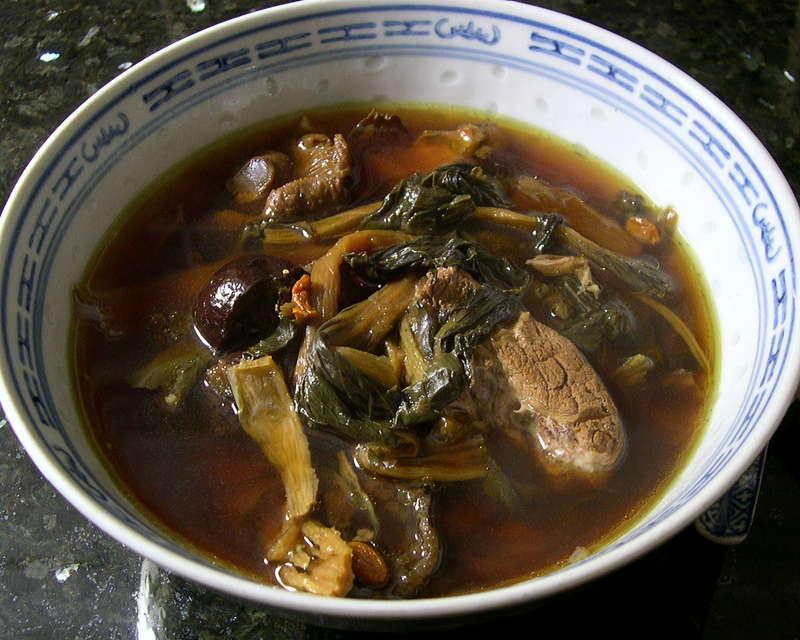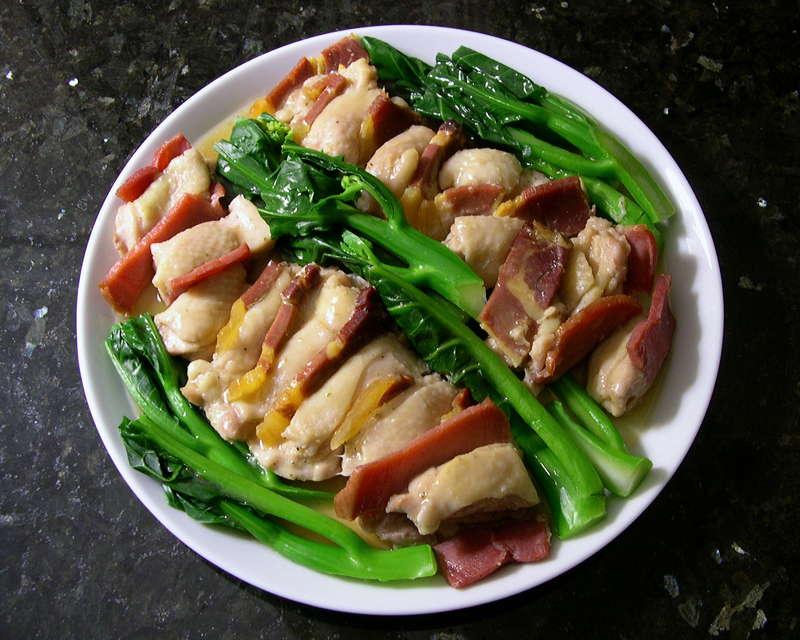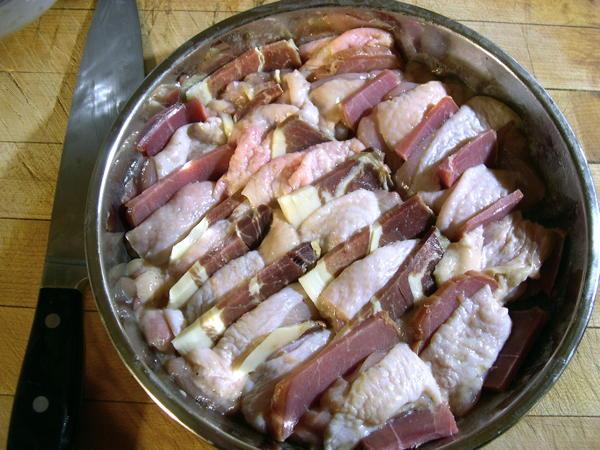Choy Kon Tong. ("Dehydrated Cole" soup; a.k.a. dried bok choy** a.k.a. "pak choy kon" soup)

The pak choy kon is trimmed§§ and the bottoms of the stems snapped off, then soaked in water for a short while.¶¶ Pot of water, short-cut pork spare ribs, a "country style" (meaty) pork rib, the soaked pak choy kon, some rice bran oil, dried Chinese jujubes (Shanxi type) broken apart, small dried "tea flower mushrooms" (茶花菇), dried wolfberries (goji berries), couple of dried lightly salted whole cuttlefish,## sea salt, generous crushed garlic cloves; bring to simmer, skim lightly, cover and simmer till sufficiently done (about 3-4 hours) when the pak choy kon is soft enough.††
** Bok choy when dried and processed the way it is to make "pak choy kon" (白菜幹) is very different from fresh bok choy if it were simply dehydrated - say, in a western-style desiccator or freeze-dry machine. "Pak choy kon" is a brownish or darker-colored brittle foodstuff which has acquired a different taste profile with its own tangy and savory flavor. Fresh bok choy is NOT a "better ingredient" to use in place of this dried ingredient, certainly not for a soup like this.)
§§ I prefer to do this rather than soften it first; much easier to snap the pieces apart so long as one does it with care - i.e. without reducing it to a thousand tiny pieces.
¶¶ Some folks soak it for hours, even overnight. I prefer to retain as much of the particular tangy flavor of the dried vegetable as I can, so I limit the soaking to "enough to make it pliable" and to enable grit/sand (if any) to be "swishable out from" the folds of the vegetable. I also add quite a bit of the soaking water (sans the detritus) to the developing soup.
## The taste of dried cuttlefish is, again, very different from fresh cuttlefish, and now is a source of a form of umami and a sort of savory taste that goes well with soups like this.
†† Simmering it for longer - and leaving it overnight then resimmering - furthers the softness of the vegetable and also mellows out the soup more, of course.
One variation of an old-fashioned Cantonese style of chicken steamed with ham, 金華玉樹雞, "Jinhua Yushu Chicken".

Deboned chicken thighs (Bell & Evans chicken), cut into thickish slices then marinated w/ good Shaohsing wine, corn starch, ground white pepper, some sesame oil, some rice bran oil, a bit of sea salt. Steamed w/ ham slices (I used both Jamón Serrano (retrieved from the freezer) and a US-produced (Brooklyn, NYC) "Jinhua-type" ham). Plated w/ kai-lan (mainly stems, leafy tops cut off) blanched in oiled simmering water. Dressed w/ a sauce formed from a slurry of Shaohsing wine, corn starch, sufficient water, crushed rock sugar, chicken stock, bit of sea salt, and white pepper brought to a boil briefly and swirling around.
On the way there – chicken & ham before steaming.





